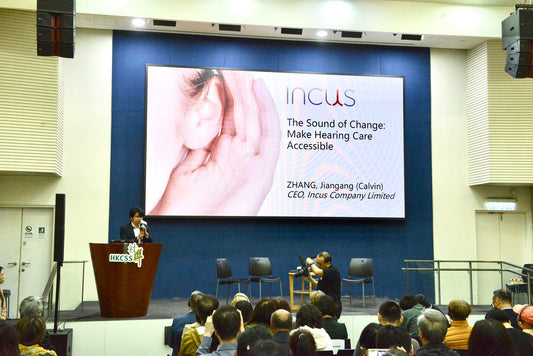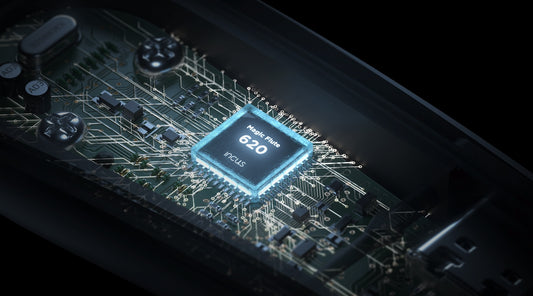
Hearing loss affects our ability to hear the TV and enjoy music. In response, people crank up the volume until the TV is too loud. Many with hearing loss stop listening to music because it does not sound how they remember it. Nevertheless, more musicians, singers and music lovers with hearing loss are coping and finding their way back to music thanks to technology. This article introduces a technology you could take advantage of to hear the television and music more clearly - even at a lower volume.
When Loud TV and Music Habits Affect Others
“TV is too loud!” is a frequent complaint in lifestyle forums online. People complain about how loud their husband, wife, grandparent or neighbour keeps the TV. More often than not, it happens because of untreated hearing loss, but the reason could be a matter of preference.
Loud listening habits can lead to conflicts and affect the health and well-being of others.
In one extreme case, the husband enjoyed playing music at home so much that he installed speakers throughout the house and yard. Unfortunately, he kept the volume so high that it prohibited conversation, despite his wife’s complaints. His wife developed moderate hearing loss in one ear. This story is an example of how continued exposure to loud sounds can lead to noise-induced hearing loss.
This Technology Lets People Hear the TV and Music More Clearly and While Reducing the Volume
The natural response when being unable to hear our favourite entertainment is to turn up the volume.
However, there is a technology which allows you to hear the television and music more clearly at a lower volume: Sound personalisation technology.
How Sound Personalisation Works
Sound personalisation technology tailors sound to the user’s unique hearing profile.
For someone with great sensitivity to low-pitch sounds but poor hearing at higher frequencies, sound personalisation technology would amplify the higher frequencies to make them easier to hear and at the same time not amplify the lower frequencies.
Some people would be able to hear more clearly at a less loud volume with this technology, depending on their hearing profile.
Sound personalisation brings the fine nuances and qualities of natural sound to life and can bring back people’s love for music.
Besides making audio feel richer and clearer, sound personalisation also helps to protect one’s remaining hearing ability.
Getting Started with Sound Personalisation
Sound personalisation is found within smart personal sound amplifiers and hearing aids.
These devices have microphones that pick up sounds from the environment, personalise them using digital signal processing techniques, and output sounds tailored to the wearer.
However, using the microphones to pick up sounds from the TV or music has limitations.
In an indoor setting, the sounds from a TV or loudspeakers will bounce off the walls and create echo-like effects. This phenomenon is also called reverberation and affects sound quality. Besides, the microphones would also pick up the background noise.
The solution is to use a device that combines Bluetooth wireless streaming with personalised sound technology. Not only will this give a better listening experience, but it will also create peace in the household because the sounds are directly transferred to the listener’s ears through wireless technology instead of being played through loudspeakers.
Kite 2 Provides Sound Personalisation and Bluetooth Streaming
Kite 2 smart personal sound amplifier is an example of a device that combines Bluetooth wireless streaming with personalised sound technology.
Kite 2 can start streaming personalised sound without additional accessories and allows for twelve hours of streaming per charge.
Kite 2 as an audio playback device opens a realm of possibilities:
- Hear the TV and music the way they should sound
- Stream entertainment and phone calls directly from your Bluetooth-enabled smartphone (both iOS and Android), television, computer, tablet and other Bluetooth devices
- Sounds are personalized based on your unique hearing profile to make them more clear and easy to hear
- No more complaints that the TV is too loud
Follow the guide to start streaming personalised sound from Kite 2 via Bluetooth.
Other Solutions
Apart from Kite 2, some digital hearing aids have Bluetooth streaming capabilities. However, be aware that they are often limited to specific technology platforms and may require additional accessories for streaming.
A hearing care professional should be your next stop if you are considering digital hearing aids. They can assess your hearing, find suitable digital hearing aids for you, walk you through the features, and take you through the hearing aid fitting process.
Before you go, read what you need to know about hearing devices.



